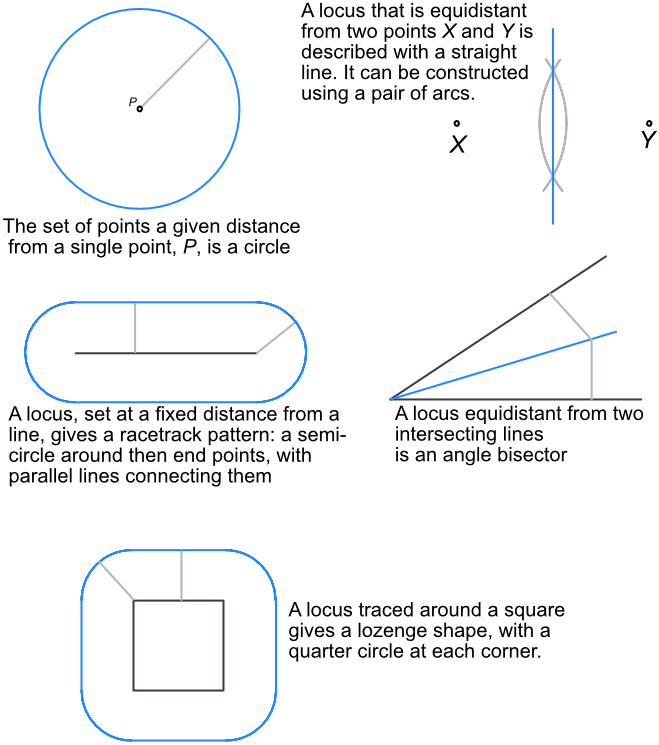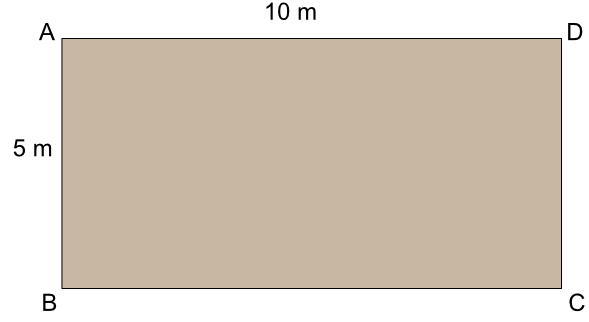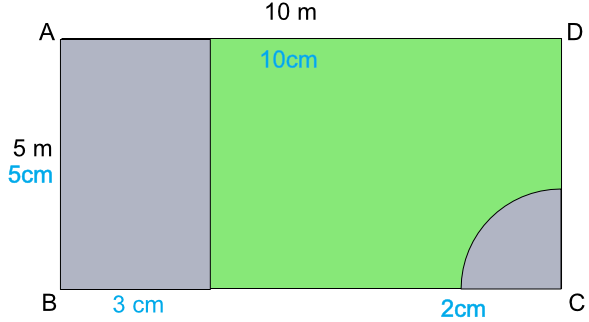A locus (the plural is loci) is a point, or set of points, that follow one or more rules.
The rules are based on a distance from a point or line.
A resulting locus can be a point, a line or an area. An area of loci is known as a region. If a boundary of a region is not included in the set of points, then it is shown as a dotted line.
Some of the more common loci are shown below:

A circle of diameter 10cm is drawn around a point. A loci is drawn 2cm outside the circumference. As a result, another circle is formed. What is the diameter of the new circle?
The loci extends the circle by 2cm on one side of the circle, and 2cm on the other side. The diameter of the circle is 10 + 2 + 2 = 14cm.
Answer: 14cm
A garden is being designed. The garden is 10 long and 5m wide.
A patio will be laid that is 3 m from the line AB across the width of the garden. A pond, set as a quarter circle, will be located with centre of the circle being at C. The radius of the pond is 2m. The rest of the garden will be laid to lawn.
Draw, to scale, the shape of the lawn.

The measurements of a suggested scale (1m : 1cm) are also shown.
Answer:
